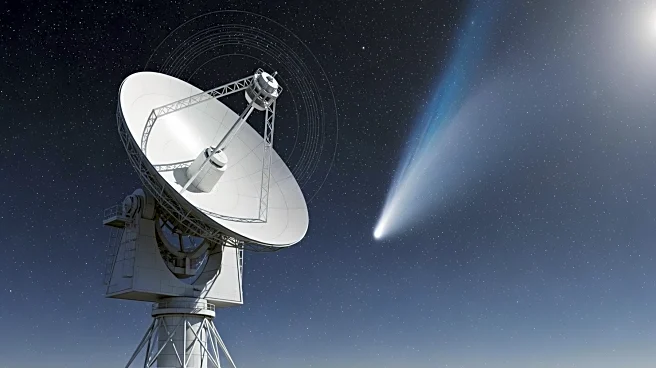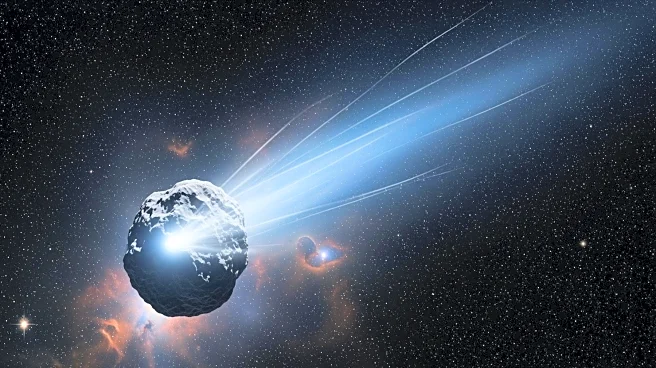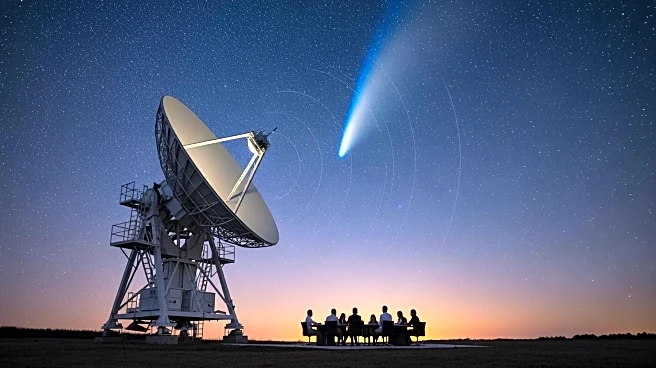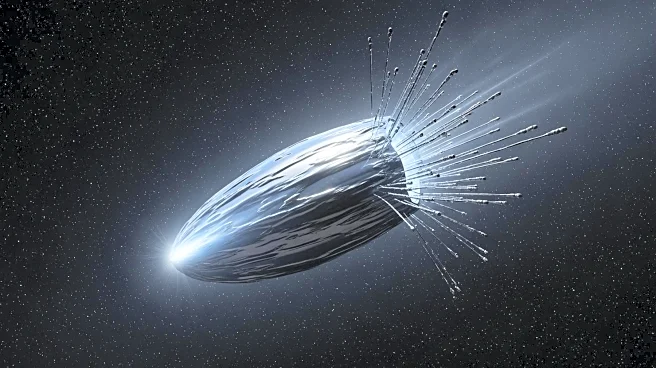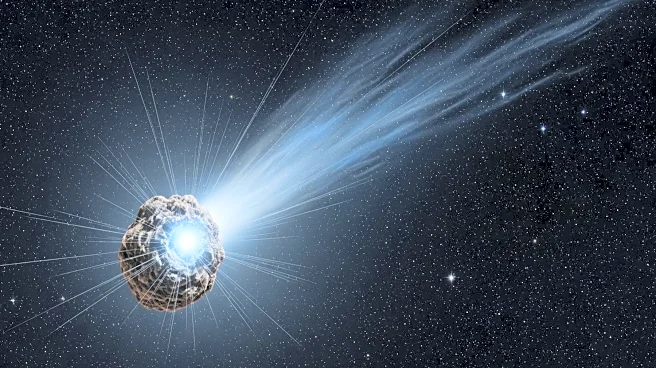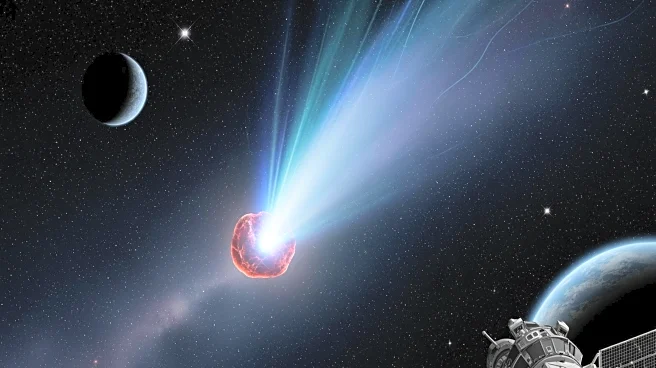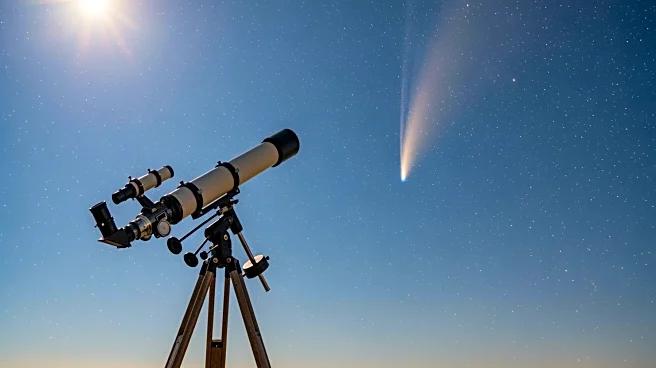What's Happening?
South Africa's MeerKAT radio telescope has detected hydroxyl absorption lines from Comet 3I/ATLAS, confirming natural comet activity. This observation, made on October 24, marks the first radio detection
of the comet, which is an interstellar visitor. Recent images reveal a complex jet structure and a visible ion tail, indicating increased activity post-perihelion. The comet passed perihelion on October 30 and will approach Earth at a safe distance of 270 million km on December 19, 2025. Despite rumors, the comet's color change claims are unsupported by data.
Why It's Important?
The detection of hydroxyl lines is a significant milestone in understanding cometary activity, providing insights into the chemical processes occurring in interstellar comets. This discovery aids scientists in studying the behavior of deep-frozen volatiles and dust-gas coupling, contributing to the broader knowledge of cometary physics. The safe distance of the comet ensures no threat to Earth, allowing for continued observation and data collection by space agencies.
What's Next?
The comet will remain a target for professional imaging and spectroscopy, with Hubble and Webb telescopes continuing their observations. ESA's Juice mission is expected to attempt observations later in November. The comet's visibility will improve for Northern Hemisphere observers as elongation increases, offering opportunities for amateur astronomers to capture images.
Beyond the Headlines
The study of interstellar comets like 3I/ATLAS provides a unique opportunity to explore the origins and evolution of celestial bodies from outside our solar system. This research could lead to advancements in understanding the formation of planetary systems and the potential for life beyond Earth.
